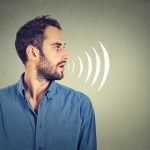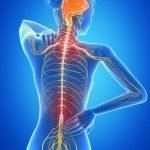Ozone Therapy: An Effective Solution for Acute and Chronic Pain
Bryan Rade, ND
Ozone is a safe, inexpensive, and effective clinical tool with a wide range of therapeutic applications. Pain management is an area where ozone excels, and many studies have been done to demonstrate its analgesic properties. Ozone was first discovered by Christain Schonbein in 1840,1 and the first US ozone generator was developed by Nikola Tesla in 1896.2 In 1902, an article on the use of ozone to treat middle ear deafness was published in The Lancet,3 and ozone therapy was used with success to treat infections during World War I. Since then, numerous clinical trials and basic research studies have been conducted to investigate the effects and mechanisms of action of ozone therapy. From the literature, ozone as a medicinal substance has been shown to be beneficial for a wide range of conditions, including pain, cardiovascular disease, mitochondrial dysfunction, infection, and non-healing skin lesions. Clinical practice has also shown benefit in neurological disorders, autoimmunity, cancer, fatigue, and others. The discussion of ozone in this article will be limited to the area of pain. For a comprehensive overview of ozone therapy, Principles and Applications of Ozone Therapy – A Practical Guide for Physicians, by Frank Shallenberger MD, HMD,4 is an excellent resource.
Methods of Administration
Ozone can be administered in numerous ways (Table 1). For the purpose of treating acute and chronic musculoskeletal pain, ozone is traditionally administered as an injection (often referred to as a “prolozone” injection when combined with collagen-producing substances). This may be delivered in several ways: intra-articularly, intramuscularly, intra-discally, or subcutaneously. Patients suffering from chronic pain of a systemic origin (eg, fibromyalgia, chronic Lyme/coinfections, CFIDS, environmental illness, etc) may require similar injection therapies and/or intravenous (IV) administration of ozone.
Table 1. Routes of Ozone Administration
| IV administration (major autohemotherapy, etc) |
| Injection (subcutaneous, intra-articular, etc) |
| Inhalation* |
| Ozone sauna |
| Cupping (topical gas administration) |
| Rectal insufflations |
| Bladder insufflations |
| Vaginal insufflations |
| Minor autohemotherapy (intramuscular) |
* must be percolated through olive oil
Intra-articular injections involve directing a local anaesthetic (often procaine) into the joint, sometimes along with a nutrient/homeopathic blend (eg, B12, folate, anti-inflammatory homeopathics, dextrose, etc). The joint is then infused with an appropriate volume and concentration of ozone gas, the needle is removed, and the associated limb is put through its range of motion to spread the fluid/gas mixture through the joint space. If done correctly, intra-articular treatments are well-tolerated, with minimal discomfort to the patient. Intramuscular, intra-discal, and subcutaneous injections are administered in a similar manner (although intra-discal treatments are often administered with image-guidance).4
Intravenous administration of ozone is traditionally administered as major autohemotherapy (MAH). MAH involves removing up to 250 mL of venous blood into an IV bag, mixing it with ozone gas, calcium chloride, and heparin (to prevent clotting), and then re-infusing it into the patient. Unlike local injections, MAH provides a system-wide exposure to the effects of ozone, hence its applicability to systemic diseases, as mentioned above. Ozone can also be administered to the whole body through IV ozonated-saturated saline, rectal insufflations of ozone gas, or cutaneous absorption via an ozone sauna (the patient sits in a steam chamber with his/her head sticking out, while ozone gas is infused into the capsule).4
Mechanism of Action
Ozone is comprised of 3 oxygen atoms (O3); as such, it is a highly reactive molecule. (By contrast: O2 is a highly stable molecule because the electrons from each oxygen atom are shared perfectly; O3 is reactive because the electrons are unequally shared.) A regular demonstration of this fact is seen in nature during a lightning strike. As electricity rips through the air, some oxygen molecules are degraded into single oxygen atoms. The majority of these atoms recombine to form O2; however, some recombine to form O3, which is why one can smell ozone during a lightning storm. This smell dissipates quickly, as ozone molecules degrade to form oxygen gas again.
Ozone appears to have an anti-inflammatory effect when it is administered subcutaneously or intra-articularly. A rat study demonstrated that a single subcutaneous ozone injection, at the site of an induced peripheral nerve injury, led to significant decreases in proinflammatory cytokines and caspaces in the orbitofrontal cortex.5 Intra-articular injection of ozone into the knees of rheumatoid arthritis (RA) rat models led to significantly reduced expression of TNF-alpha and TNF-alpha receptor 2.6 This effect was not seen in control rats receiving intra-articular oxygen injections, demonstrating the ozone-specific nature of the treatment effects. RA synovial fibroblast cells treated with ozone and then injected into rat knees demonstrated significantly reduced levels of tumor necrosis factor (TNF)α, interleukin (IL)-1β, and IL-6.7
When administered systemically, ozone appears to have immunomodulating, antioxidant, and cellular metabolism-enhancing effects. Human subjects undergoing MAH showed significant changes in levels of TNFα, interferon (IFN)γ, and IL-2,8 as well as IL-4,9 and IL-1β, IL-8, platelet-derived growth factor (PDGF), and TGF-1β.10 Daily rectal insufflation of ozone gas for 20 days in humans resulted in a reduction of oxygen free radicals, improved antioxidant status, and reduced biomarkers of protein and lipid oxidation.11 MAH in patients suffering from dry age-related macular degeneration produced a reduction of reactive oxygen metabolites.12 Intravenous ozone in humans produces an increased rate of glycolysis13 and improves oxygen delivery to tissues in patients with impaired peripheral blood flow.14 Systemic ozone treatment has been shown to increase levels of ATP, as well as 2,3-diphosphoglycerate, which may account for the improved oxygen delivery to tissues.15
There is also research suggesting ozone therapy has an antimicrobial effect in the body. Infection may cause acute pain (eg, dental, skin, or joint infection) or chronic pain (eg, chronic Lyme disease, autoimmunity,16 chronic fatigue syndrome, etc). Exposure of patient saliva to ozone gas results in a reduction of cariogenic bacteria,17 and infusion of ozone gas into a root canal has significant bactericidal effects, as compared to untreated root canals.18 Hepatitis C patients treated with a combination of MAH, rectal insufflation, and minor autohemotherapy (a procedure in which a small volume of venous blood is removed, mixed with ozone, and re-injected into a muscle) showed improved levels of hepatic transaminases (ALT/AST), reduced clinical symptoms, and reduced HCV RNA levels compared to controls.19
Clinical Applications from the Literature
Ozone therapy has excellent versatility in treating musculoskeletal sources of acute and chronic pain (Table 2). Many studies have been conducted on the use of ozone injections for back pain, especially that related to herniated discs.20-24 These studies have shown positive clinical outcomes with intra-discal or paravertebral ozone injections, with one trial demonstrating better efficacy than steroid infiltration.25 Analgesic effects of ozone have also been demonstrated in the treatment of sciatica,25 headache,26 temporomandibular joint (TMJ) disorder,27 sensitive-tooth pain,28 and radiotherapy-induced proctitis.29
Table 2. Musculoskeletal Sources of Pain Treated by Ozone
| Acute strains/sprains |
| Ligament laxity |
| Arthralgia (osteoarthritis, rheumatoid arthritis, trauma, etc) |
| Trigger points |
| Nerve impingement |
| Disc herniation |
| Fascial adhesions |
| Reduced healing time |
| Osteomyelitis |
| Complex regional pain syndrome (CRPS) / Reflex sympathetic dystrophy (RSD) |
Clinical Applications from Practice
In clinical practice, ozone injections have a high frequency of success in treating joint pain. Indeed, clinical reports abound of patients who were scheduled for joint replacement surgery and ended up postponing it because of complete or acceptable symptom amelioration from ozone treatment. Knee and shoulder joints appear to be the most responsive joints to treatment, while hip joints are the most challenging to treat successfully, even with the assistance of ultrasound guidance.
Dental pain also tends to respond well to treatment, whether it is post-root canal, trauma-induced, or idiopathic. I have observed trigger points and symptom-inducing scar tissue to regularly resolve more easily when ozone is added into the treatment protocol. Nasal inhalation of ozone gas that has been percolated through olive oil frequently works very well for pain from acute or chronic sinusitis (it must be noted that if ozone is inhaled without percolating it in oil, it is very irritating and damaging to the lungs30). Patients suffering from chronic infections such as Lyme or its coinfections (eg, Bartonella, Erlichia, Babesia, etc) often have faster symptom resolution when using ozone injections in painful muscles or joints. Such amelioration may be due to a combination of the anti-inflammatory effects of ozone and its antimicrobial properties.
Systemic administration of ozone, as in major autohemotherapy, can be of great benefit in chronic pain syndromes like fibromyalgia, chronic fatigue syndrome, autoimmune disorders, etc. In some cases, MAH as a standalone treatment can provide symptom relief; however, in the majority of cases, additional interventions are required. Given that the proposed mechanisms of MAH revolve around the enhancement of antioxidant status, mitochondrial function, and immunomodulation, it stands to reason that supportive dietary and lifestyle changes, supplements, and other therapies would be required to enhance its effects. Indeed, the effects of MAH rarely reach their full potential without the following: an anti-inflammatory diet, exercise to tolerance, adequate nutrient status (especially B vitamins, magnesium, mitochondrial support factors), endocrine support (thyroid, adrenals, etc), unimpeded liver function and emunctories, and support towards a healthy milieu (ie, balanced microbes, pH, autonomic function, mental/emotional state, methylation, etc). In short, systemic ozone therapy can be a powerful complement to what we already specialize in as naturopathic doctors.
Safety
As mentioned above, ozone is known to be toxic to lung tissue when it is directly inhaled. Long-term exposure to inhaled ozone can contribute to the formation of asthma, COPD, allergies, and cardiovascular disease.30 Most ozone treatments do not involve any degree of direct ozone inhalation (eg, MAH, prolozone), and those that do (eg, ozone sauna) are for a very short duration and in low concentration.
Contraindications to ozone therapy are limited to the following: pregnancy (due to an absence of studies demonstrating its safety in pregnancy), alcohol intoxication, and hyperthyroidism. MAH is relatively contraindicated in patients with thrombocytopenia, as MAH involves the administration of heparin to prevent the clotting of blood removed during the procedure (this can be circumvented by using ozonated saline, rectal insufflation, or ozone sauna instead). The most common side effects of ozone therapy are bruising and pain at the site of injection (as with any injection therapy), Herxheimer reaction following IV administration in chronically ill patients, skin irritation if ozone is not humidified before cutaneous administration, and lung irritation if ozone is not percolated through fresh olive oil before inhalation.4
Conclusion
Ozone therapy is a highly versatile clinical tool. Understanding of its mechanisms of action and clinical utility is still in its infancy; however, it has a long clinical history and a wealth of positive effects reported in practice. For doctors already using parenteral therapies, it is a simple and enjoyable modality to add to your tool kit. Training courses are available through the American Academy of Ozonotherapy, the organization that strives to maintain a high standard of practice for physicians who choose to implement it.
For doctors who do not use parenteral treatments, it is certainly worthwhile to look into ozone inhalations, insufflations, saunas, and topical administrations, as they are of great clinical utility. Training for non-injection ozone therapy is still useful to pursue, as it provides a great deal of information about the biochemistry behind mitochondrial function and the pathophysiology of common diseases.
I have found ozone therapy in all of its forms to be an invaluable addition to my practice. Even equipped with core naturopathic modalities, injection therapies (neural therapy, prolotherapy, neural prolotherapy, biopuncture, platelet-rich plasma, IV therapies (peroxide, alpha-lipoic acid, vitamin C, chelation, methylsulfonylmethane, Myer’s cocktail), and other integrative therapies, I have found ozone to be of inimitable value for many of my patients suffering from pain and chronic illness.
Case Study 1
MD, a 55-year-old male with a chief complaint of bilateral knee OA, was scheduled for knee replacement. Four weekly intra-articular prolozone injections took his pain from 8/10 to 4/10, using a visual analog scale (VAS). Over the last 12 months, subsequent injections every 4-6 weeks have maintained the pain at 3/10.
Case Study 2
BR was a 29-year-old male with a chief complaint of acute right ankle sprain (VAS=6/10) and a history of right ankle sprain every 12 months from sport accidents. One intra-articular prolozone injection was performed. The next day his VAS score was 3/10. BR has been sprain-free for 2 years, with same level of activity.
Case Study 3
KM, a 15-year-old female, had a chief complaint of idiopathic right hip pain (VAS=5/10), and an impaired ability to run and play sports. One intra-articular prolozone injection led to complete amelioration of symptoms, which has continued for the past 3 years.
Case Study 4
GA was a 78-year-old female with a chief complaint of acute left bicep tendon strain (VAS = 6/10), and reduced ability to use her arm overhead. One subcutaneous prolozone injection led to complete symptom resolution within 1 week.
Case Study 5
WC was a 41-year-old female with multiple sclerosis, general pains (VAS=5/10), and fatigue. Weekly MAH was initiated, along with a mitochondrial support formula and adrenal support formula. Within 1 month, her VAS score was 1/10, and her low energy was significantly ameliorated.
 Bryan Rade, ND, graduated from the Canadian College of Naturopathic Medicine. He has an eclectic family practice at the Sackville Naturopathic Health Centre in Halifax, Nova Scotia. Bryan is a member of the executive committee of the Nova Scotia Association of Naturopathic Doctors. The majority of his patients present with pain and/or chronic disease and he strives to learn as much as he can in all areas of integrative medicine to help them reach a place of optimal health. He can be contacted via [email protected] or www.sackvillenaturopathic.com.
Bryan Rade, ND, graduated from the Canadian College of Naturopathic Medicine. He has an eclectic family practice at the Sackville Naturopathic Health Centre in Halifax, Nova Scotia. Bryan is a member of the executive committee of the Nova Scotia Association of Naturopathic Doctors. The majority of his patients present with pain and/or chronic disease and he strives to learn as much as he can in all areas of integrative medicine to help them reach a place of optimal health. He can be contacted via [email protected] or www.sackvillenaturopathic.com.
References:
- Rubin MB. The History of Ozone. The Schönbein Period, 1839–1868. Bull Hist Chem. 2001;26(1):40-56. http://www.scs.illinois.edu/~mainzv/HIST/bulletin_open_access/v26-1/v26-1%20p40-56.pdf. Accessed April 15, 2014.
- Elvis AM, Ekta JS. Ozone therapy: A clinical review.J Nat Sci Biol Med. 2011;2(1):66-70.
- Stoker G. Ozone in Chronic Middle-Ear Deafness. The Lancet. 1902;160(4131):1187-1188.
- Shallenberger F. Principles and Applications of Ozone Therapy: A Practical Guide for Physicians. CreateSpace Independent Publishing Platform; 2011. [self-published]
- Fuccio C, Luongo C, Capodanno P, et al. A single subcutaneous injection of ozone prevents allodynia and decreases the over-expression of pro-inflammatory caspases in the orbito-frontal cortex of neuropathic mice. Eur J Pharmacol. 2008;603:42–49.
- Chen H, Yu B, Lu C, Lin Q. The effect of intra-articular injection of different concentrations of ozone on the level of TNF-α, TNF-R1, and TNF-R2 in rats with rheumatoid arthritis.Rheumatol Int. 2013;33(5):1223-1227.
- Chang JD, Lu HS, Chang YF, Wang D. Ameliorative effect of ozone on cytokine production in mice injected with human rheumatoid arthritis synovial fibroblast cells.Rheumatol Int. 2005;26(2):142-151.
- Bocci V, Valacchi G, Corradeschi F, et al. Studies on the biological effects of ozone: 7. Generation of reactive oxygen species (ROS) after exposure of human blood to ozone. J Biol Regul Homeost Agents. 1998;12(3):67-75.
- Larini A, Bocci V. Effects of ozone on isolated peripheral blood mononuclear cells. Toxicol In Vitro. 2005;19(1):55-61.
- Valacchi G, Bocci V. Studies on the biological effects of ozone: 10. Release of factors from ozonated human platelets. Mediators Inflamm. 1999;8(4-5):205-209.
- Martínez-Sánchez G, Delgado-Roche L, Díaz-Batista A, et al. Effects of ozone therapy on haemostatic and oxidative stress index in coronary artery disease. Eur J Pharmacol. 2012;691(1-3):156-162.
- Borrelli E, Diadori A, Zalaffi A, Bocci V. Effects of major ozonated autohemotherapy in the treatment of dry age related macular degeneration: a randomized controlled clinical study. Int J Ophthalmol. 2012;5(6):708-713.
- Ciborowski M, Lipska A, Godzien J, et al. Combination of LC-MS- and GC-MS-based metabolomics to study the effect of ozonated autohemotherapy on human blood. J Proteome Res. 2012;11(12):6231-6241.
- Giunta R, Coppola A, Luongo C, et al. Ozonized autohemotransfusion improves hemorheological parameters and oxygen delivery to tissues in patients with peripheral occlusive arterial disease. Ann Hematol. 2001;80(12):745-748.
- Bocci V. Oxygen-Ozone Therapy. A critical evaluation. Dordrecht, The Netherlands: Kluwer Academic Publishers; 2002.
- Alam J, Kim YC, Choi Y. Potential Role of Bacterial Infection in Autoimmune Diseases: A New Aspect of Molecular Mimicry. Immune Netw. 2014;14(1):7-13.
- Johansson E, Claesson R, van Dijken JW. Antibacterial effect of ozone on cariogenic bacterial species. J Dent. 2009;37(6):449-453.
- Halbauer K, Prskalo K, Janković B, et al. Efficacy of ozone on microorganisms in the tooth root canal. Coll Antropol. 2013;37(1):101-107.
- Zaky S, Kamel SE, Hassan MS, et al. Preliminary results of ozone therapy as a possible treatment for patients with chronic hepatitis C. J Altern Complement Med. 2011;17(3):259-263.
- Alberto PO. Ozone the one and only drug. Acta Neurochir Suppl. 2011;108:143-146.
- Zhang Y, Ma Y, Jiang J, et al. Treatment of the lumbar disc herniation with intradiscal and intraforaminal injection of oxygen-ozone. J Back Musculoskelet Rehabil. 2013;26(3):317-322.
- Rahimi-Movaghar V, Eslami V. The major efficient mechanisms of ozone therapy are obtained in intradiscal procedures. Pain 2012;15(6):E1007-E1008.
- Melchionda D, Milillo P, Manente G, et al. Treatment of radiculopathies: a study of efficacy and tollerability of paravertebral oxygen-ozone injections compared with pharmacological anti-inflammatory treatment. J Biol Regul Homeost Agents. 2012;26(3):467-474.
- Magalhaes FN, Dotta L, Sasse A, et al. Ozone therapy as a treatment for low back pain secondary to herniated disc: a systematic review and meta-analysis of randomized controlled trials. Pain 2012;15(2):E115-E129.
- Bonetti M, Fontana A, Cotticelli B, et al. Intraforaminal O(2)-O(3) versus periradicular steroidal infiltrations in lower back pain: randomized controlled study. Am J Neuroradiol. 2005;26(5):996-1000.
- Clavo B, Santana-Rodriguez N, Gutierrez D, et al. Long-term improvement in refractory headache following ozone J Altern Complement Med. 2013;19(5):453-458.
- Daif ET. Role of intra-articular ozone gas injection in the management of internal derangement of the temporomandibular joint. Oral Surg Oral Med Oral Pathol Oral Radiol. 2012;113(6):e10-e14.
- Dähnhardt JE, Gygax M, Martignoni B, et al. Treating sensitive cervical areas with ozone. A prospective controlled clinical trial. Am J Dent. 2008;21(2):74-76.
- Clavo B, Ceballos D, Gutierrez D, et al. Long-term control of refractory hemorrhagic radiation proctitis with ozone therapy. J Pain Symptom Manage. 2013;46(1):106-112.
- Bocci V. Is it true that ozone is always toxic? The end of a dogma. Toxicol Appl Pharmacol. 2006;216(3):493-504.









